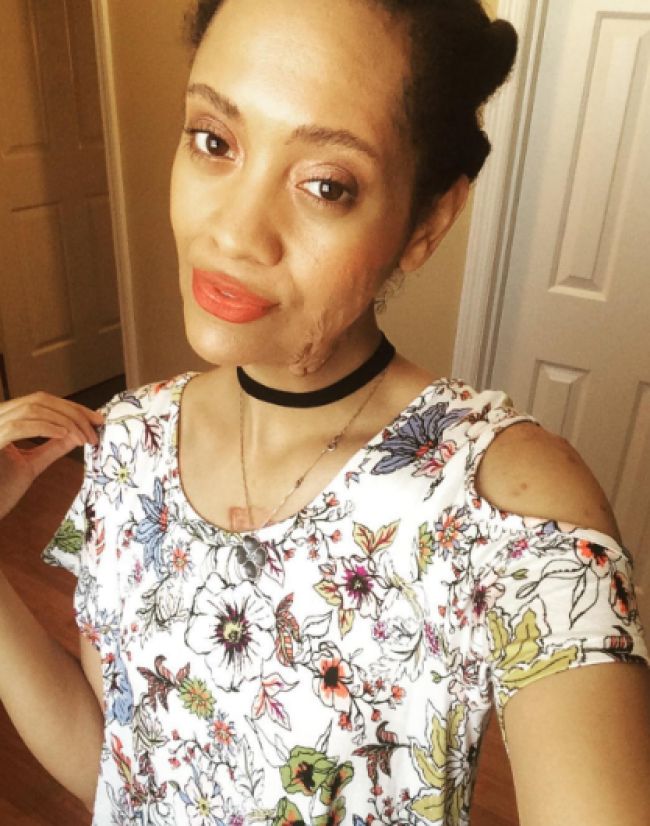A keloid is a type of scar that forms mainly from collagen and an overgrowth of tissue caused by a healed skin injury. Commonly formed after some piercings, these scars are benign and although not contagious, they can cause itchiness, pain, and permanent hair loss. People of African descent are 15 times more likely to have keloids than those of European descent.
We spoke with YouTuber Sarah Fremgen, a curly girl living with the condition, hoping to bring more positivity and knowledgeable light on the subject so that women of color like herself do not feel ashamed or alone with the skin disorder.
Keloids cover up 20% of my body.
I have prominent ones on both lower sides of my jaws and several in my chest. Removing these types of scars, is very risky because the condition can worsen 50% of the time when attempted so I decided not risk removing them. I was diagnosed with the condition when I was 14, and because of their obvious location, I was made fun of and bullied a lot, so it was very hard for me growing up with them.
Keloids scars, are the result of an overgrowth of collagen. Whenever there is a wound and when the wound scars, a keloid forms. Usually it will grow sometimes double the size of the original wound. A hypertrophic scar is a bit different, like the keloid it is raised and bumpy, but it usually stays the same size as the wound. They can be itchy and irritating at times, and for some people, they can affect the movement of the skin if they become too large.
Luckily for me personally, my hair and scalp hasn’t been affected that much.
I have heard of people who suffer with it on their scalp and it can cause hair loss. I do have to be cautious on keeping my scalp from getting scratched or wounded in anyway–any part of my body could scar even from the smallest abrasion–but for the most part, my hair and scalp have stayed healthy.
Since there is not really a 100% safe cure for the condition, I realized I could either walk in shame or embarrassment for the rest of my life, or I could make it work for me!
I do have a few key things to prevent my skin from getting any more keloids, and to keep the keloids I do have from being irritated. I moisturize! The most important thing for people with this condition, I think is to keep your collagen levels balanced. That way you are not over over-producing collagen, which is the main culprit for keloids. I moisturize twice a day and keep my skin clean of course.
The most important thing for people with this condition, I think is to keep your collagen levels balanced.
I also try to avoid getting scratched or any flesh wounds, but life happens and sometimes I just have to cross my fingers and hope I won’t get a keloid if I do get a flesh wound. You never know, sometimes nothing happens lol.
This condition is more emotionally debilitating than physically, and after years of people trying to ‘fix’ me, I realized that I didn’t need to be emotionally scarred anymore. There was so much more power in being someone who encourages others that they can be their own standard of beauty than being someone who didn’t even believe in their own beauty. You should be able to love who you are without apologizing–whether it’s your clothes, your hair, or your skin.
Tips for managing scalp keloids
-
only wash the area with 100% natural cleansers
-
manage by applying aloe vera in the area which helps to heal and clear the scarring
-
lemon and lime juice can help to shrink the unwanted collagen tissue (be careful–the juice can cause burning to the surrounding skin”>
-
Rub some onion juice or turmeric in the area for their anti-inflammatory agents
Check out Sarah’s channel by clicking the link below:
Do you suffer with keloids on the scalp?
If so, how do you manage them alongside your natural hair routine?


